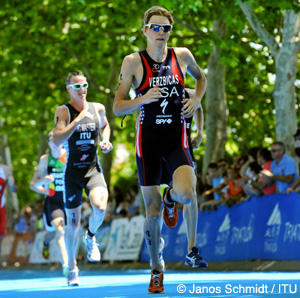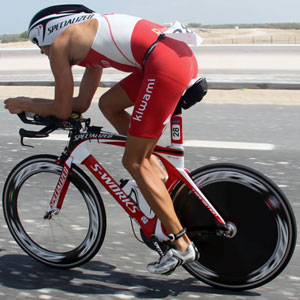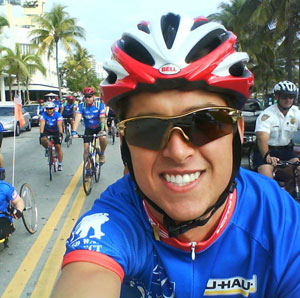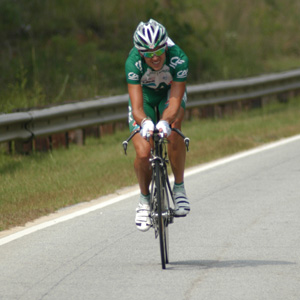When Things Go Wrong
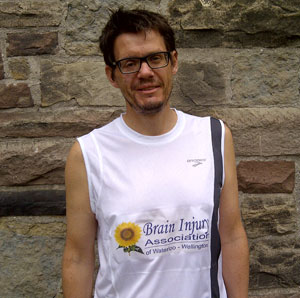
In general, our sport is supposed to enhance our quality of life and improve the overall life experience, but in this case, slowtwitch.com forum member Jan de Visser, opens up to us about how going out for a simple ride has had a major effect on his life and that of his family. Every time we return from a ride, we may take the success of that ride for granted. To some degree we should, but when it does not go right, the pain and suffering might last for months or years.
There is no good news miracle comeback that this story ends with. Jan provides us visibility of his daily struggles. Some of our athletes have had major injuries or PTSD in combat areas, but the enemy we often don’t speak of is the one that awaits us at the next intersection on our next training ride. On a plus side, training for running has provided Jan an outlet to his daily struggles. He will actually race a marathon this weekend in the hopes of a Boston Qualifier time. We wish him our best.
Slowtwitch: Jan, thanks for taking time with us, sharing your experience and opening up to the community with some very personal and private thoughts. You have a big event coming up. A lot of ST athletes do marathons, but your path to this start line is not what we wish on anyone. Tell us more.
Jan de Visser: On September 3rd, 2011 I had a catastrophic accident during my last hard ride before my A race for that season. The Toronto Marathon on May 5th is my first major race after that accident.
ST: In your case it was a fairly traumatic brain injury. How are you doing these days?
Jan: I am doing better. I am able to mostly run my life, to be a father to my children. However, after more than a year and a half, I am still not working.
ST: Your work is in one of the most competitive consumer drive fields of technology?
Jan: I work in a cognitively demanding field (software development), and straining my brain for more than an hour, be it by creating software or otherwise being creative, or by having a conversation with more than one person, I am so fatigued I need a break for an hour or longer.
ST: I guess you want to share this with others coming back from Traumatic Brain Injuries?
Jan: Yes. Pressing on and not taking that break will trigger epileptic seizures, which basically ruin the rest of my day. In addition to the fatigue, I also suffer from cognitive disabilities, which would hamper my functioning in the workplace: my planning and organization, in particular with respect to time, is compromised. I have a hard time planning my day and prioritizing the things I need to do, to the extent that I need help from my wife, and my rehab team to successfully do that.
ST: What about the physical side?
Jan: Yes, there are some minor after effects like chronic neuropathic pain, impaired balance and vision, and sleep problems.
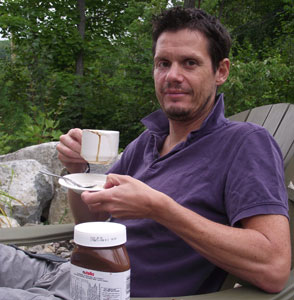
ST: Could you describe the accident?
Jan: Since the case is still before the court, I'll be brief, but I was riding down the road and was hit by a motorist making a left turn into my path. My head crashed into the car's window, smashing the right side of my face, causing an orbital blowout fracture in my right eye, and breaking my neck. The breaking glass caused bad lacerations in my shoulder. Finally, hitting the road caused a broken collarbone and road rash.
I was transported to my local hospital, which is fortunately about 3 minutes by ambulance away. Apparently I was conscious when the EMS people found me, but slipped in and out of consciousness in the ambulance. This, combined with the state of my face, made the emergency doc decide to sedate me and send me to a specialized trauma hospital, where I spend 2 days in an induced coma and a month recovering. My face was rebuilt using huge amounts of titanium.
Fortunately my broken neck healed with just patience, and since I was immediately immobilized by EMS never threatened my life. Having said that, I may well have died immediately if my neck would have broken in a slightly different way.
ST: What came next?
Jan: Initially it was fixing broken parts. Only later did it become apparent that the head trauma had caused a brain injury as well; while in hospital and for about 3 months after I felt fine and didn't notice any of the problems I have now. I even attempted to go back to work after 4 months, in January 2012. That's when the symptoms, most notably the epilepsy, developed.
ST: Any words of advice?
Jan: I have many warnings for other triathletes. First is to make yourself safe. Wear a good helmet, and make yourself visible. Be careful, especially in town, where motorists may make sudden turns into side streets, driveways, or parking spots. That probably means limiting your speed and not riding in aero.
After an accident has happened, monitor your brain. Be aware of symptoms like headaches, fatigue, mood changes like depression and irritability, sleep problems, cognitive problems like memory, planning and organization problems, and decreased tolerance for external stimuli like noise, light, and stress.
And my final warning would be to be prepared. Carry ID. Know a lawyer you can contact. Be aware that bad things can happen, and if necessary carry additional insurance to make sure you make it through a situation like mine. I haven't worked for a year and a half, but fortunately I have disability insurance through my work.
ST: Tell us a bit about the ups and downs, not just in terms of training and sport, but overall impact on quality of life.
Jan: Oh man, where to start. With the most important thing I guess, my family. My marriage changed, it didn't get worse, but my wife and I have to always be aware of the fact that she's not my nurse. My boys (9 and 6 now) seem to have handled it OK, but I'm different from other fathers. I stay home, but friends usually can't come over, and if they do, they have to be quiet and can't run around screaming like boys that age like to do. Instead of a dad that plays soccer with them and rides bikes, they have one that's having epileptic seizures on the couch.
My parents live in the Netherlands, and my father has Multiple Sclerosis. He can't travel because of that, and I can't travel because of my injuries. So we're left with swapping neurologist stories over Skype.
Social life changed as well, since I can't handle being with more than a handful of people at the same time. This means that especially the Christmas period was hard. There is slow improvement though – a couple of months ago I took my oldest son, who, at 9 years old, is a Jimmy Page fan, to Jason Bonham's Led Zeppelin tribute show, and that was fine.
I enjoy music, and it doesn't bother me, so as long as I had the music to focus on the presence of another 1,000 people didn't seem to cause any problems. And fortunately most of my friends understand and we arrange low key get-togethers at each others homes or coffee shops instead of large parties or dinners at busy restaurants. Unfortunately some people don't understand, and I do notice my real-life circle getting smaller. I have however gotten tremendous support from for example the ST community, and also Facebook friends that I would never have expected came out of the woodwork with support.
There are also the practical issues. Due to the epilepsy, my license is suspended. So I can't drive. I can't ride my bike either, but that's changing now, fortunately, so my only means of transportation is walking or my taxi service. This severely limits what I can do; it also means that my wife is responsible for all shuttling of kids and retrieval of large items from stores. I think that personally this is the most annoying thing, and I think my wife would agree. But there's more; for example I can't cut the grass because of the noise.
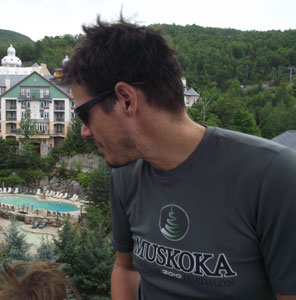
ST: Let’s come back to the sport side which is near and dear to all readers and which sometimes we may take for granted.
Jan: Athletic life changed dramatically. I was a relatively new triathlete, but had embraced the lifestyle as something that fit my personality to a T. So I was doing the familiar work-family-training juggle, and ended up with 12 hours of training a week. And that changed. First of all, I need my sleep, so getting up at 5:30 to get a session in is not going to work.
Secondly, as I said one of my cognitive problems is poor planning skills. Planning my day to get all my work (kids, rehab, grocery shopping, cooking) is hard for me, and planning more than one workout would make it even harder. But fortunately the need for multiple workouts is greatly reduced because I'm back to a single sport athlete now – swimming is out due to the noise and light reflections in the pool, and because having a seizure in the pool is mostly lethal, and my rehab team doesn't like me biking yet due to balance and vision problems. So I'm a runner.
However, even being just a single sport athlete brings challenges to a person with a brain injury. I have what's called initiation problems, which means it's hard for me to get started with tasks. And that includes workouts, causing me to sometimes have to cancel or cut short sessions because reading that one last Lavender Room thread seemed more important than a VO2Max session.
ST: Saul Raisin said that from the outside, a person with traumatic brain injury looks normal, but from the inside the person is limping. What are some of the things you do to help make progress on the limping inside?
Jan: The practical answer to that is that I have a great rehab team consisting of a physiotherapist, occupational therapist, speech-language pathologist, psychological counsellor, and a therapy support worker, all specialized in brain injuries, working for me. But the real answer is that I could not get better before I started to admit that the problems these people identified are actual problems for me. As an example, my short-term memory is shot. The example I like to give is that my wife left a piece of clothing near the door for me to take to the dry cleaner's. When I was ready to leave the house, I saw the piece of clothing and knew I had to do something with it, but for the life of me couldn't remember what. For a year now, my speech-language pathologist has told me I need lists. But I kept telling myself that I'm this bright guy that never in his 45 years needed lists and that I wasn't going to start now. But I know better now, I need lists and I make them. But it took a long time.
ST: Tell us a bit about your participation in the ST 100/100 challenge and how it helped move you a long not just physically but also psychologically
Jan: I had done a lot of running over the summer of 2012, for me at least. In many ways, running keeps me sane; it's something that I can do almost as well as I used to. It gets me out of the house, and it gives me time alone to contemplate my life and the challenges ahead. Last fall it became obvious that after having to scrap the 2012 tri season, 2013 didn't look good either. I needed a goal or else I was afraid I would fall off the wagon and end up as the proverbial slob sitting on the couch watching television and eating cheezies all day. My plan was that if I could get some good training in over the winter, I could do a spring marathon with the aim of a BQ.
I participated in the 100/100 challenge in 2010/11, managing about 70 sessions, and noticed my running improved considerably. I ran my 5km PR that spring, going under 20 minutes, and was running well in the triathlons I did that season, resulting in my first AG podiums. Yay for 5-deep podiums, the only chance for poor swimmers like me. I wanted to participate in 2011/12 as well, but that didn't go so well. I did know last fall that if I was to slog my way training through an Ontario winter the 100/100 was the perfect vehicle to keep me motivated. And I needed that motivation, because I was told not to run outside when there is ice or snow on the ground (subsequent blows to the head are bad), and in addition my internal thermometer is messed up and if I run in the cold I just don't warm up. So even running on those clear, crisp days was out.
As it turned out, the virtual competition was great. I ran all but about 4 days of January on the treadmill, February was only treadmill, and about two-thirds of my March runs were inside. There's no way I could have made that without my fellow STers pushing me. I ended with 81 runs, and that despite missing about 10 days due to full anaesthetic surgery.
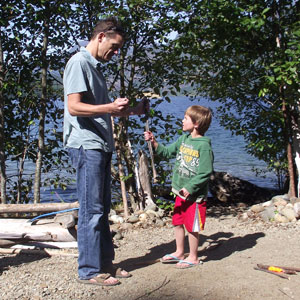
ST: You recently went for an outdoor bike ride. First time since the accident?
Jan: I have been nagging my rehab team since about November 2011 that I wanted to get back on the bike. My bicycle means freedom, especially after my license was suspended.
The reason people have been reluctant to endorse me riding is that my vision and balance are impaired. Especially my vision was a problem; I have pretty severe double vision. When I would do a shoulder check, it would take about 2 seconds for the image to become clear, and then 2 seconds again when I turned my head back forward. Obviously that's unsafe. I recently got new glasses with prisms in them, which correct most of the double vision, and this meant that my nagging finally paid off.
My Occupational Therapist took me to an old railway track deep in Mennonite country. It's packed gravel and runs through farmland and Mennonite maple sugar lots. I rode my mountain bike and she rode next to me. So there was a lot going on, even if we only did 10mph: I had to ride the bike, the trail wasn't completely smooth, the trees at the side of the trail were flashing by, it was a nice bright day so there were lots of shadows everywhere, and I had somebody riding next to me. These are all things you don't think about when you try to keep your power at 85% of FTP at mile 52 in your 70.3. Because your brain, a healthy brain, filters all that stuff out, and makes you notice only the important things: the pothole ahead, the cars, etc.
I have to relearn that filtering process. Because as it is right now, 30 minutes of riding at 10mph is as exhausting as 2×20 at FTP used to be. I'm confident I will get better though. The good thing about my rides, I've done another one with my wife since, is that I wasn't afraid, and according to my wife I wasn't swerving or otherwise showing signs of poor bike handling.
ST: That is good to hear. Going back to the marathon, what is your goal?
Jan: Finishing the Toronto Marathon in a decent time. I'm shooting for BQ -10, which in my AG is 3:15, with a 3h 14' 15.92” as a stretch goal, and that will be an important step in my recovery. It means I can still set major goals and work towards realizing them, regardless of the challenges that may bring.
ST: A closing message for fellow athletes?
Jan: Never take anything for granted.


